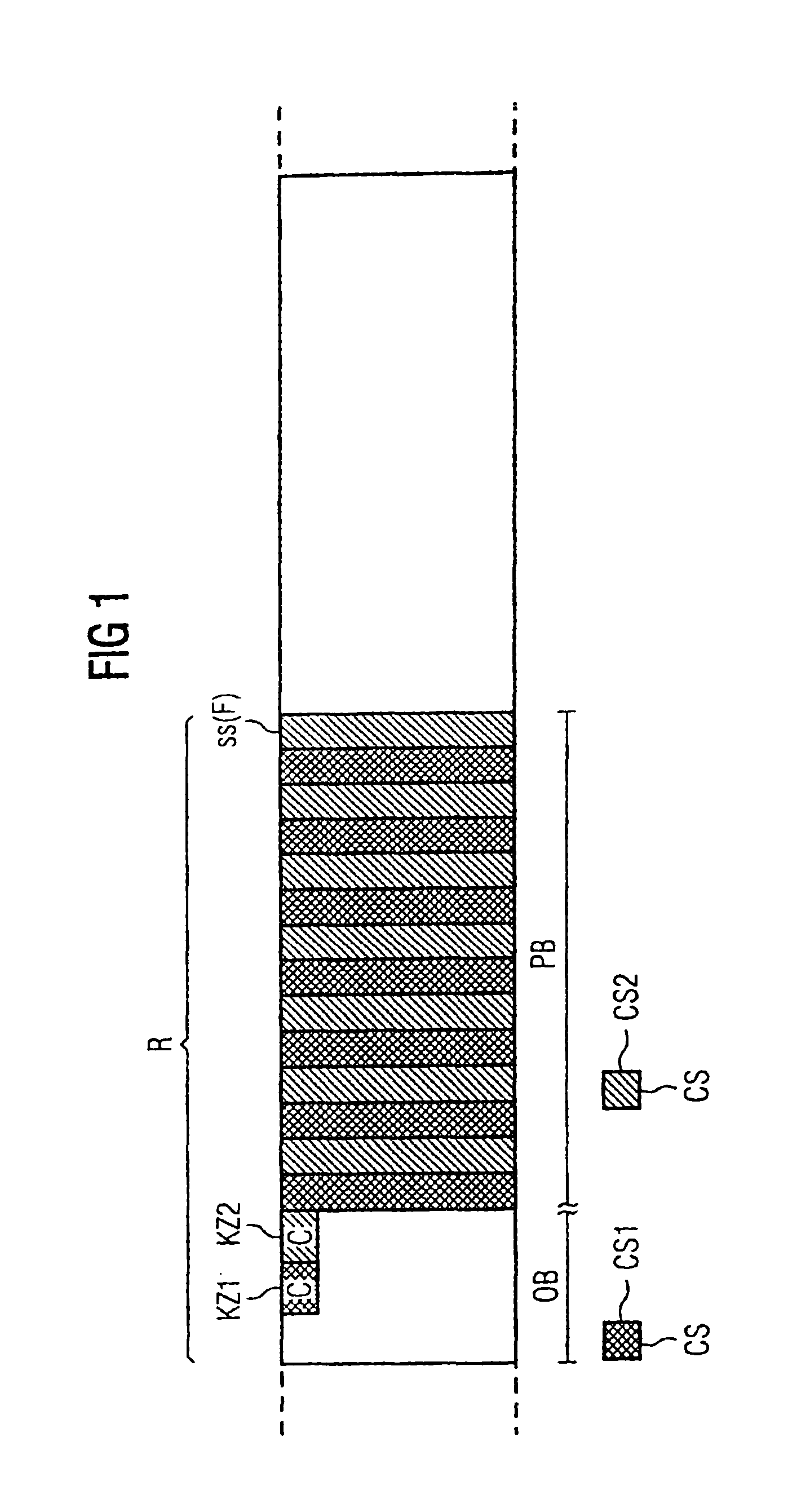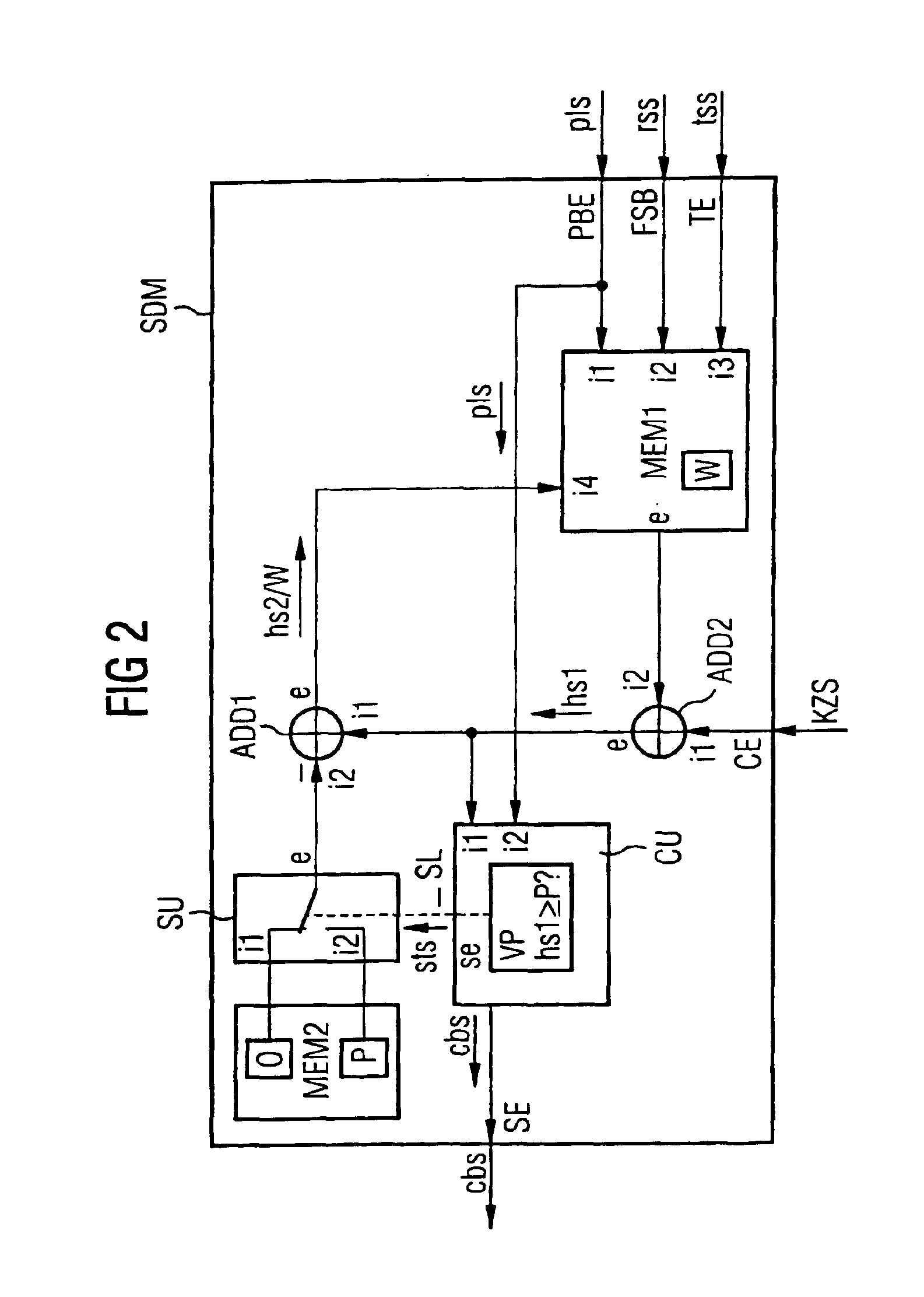Method and system for transmitting at least one client signal within a server signal
a server signal and client signal technology, applied in the field of method and system for transmitting at least one client signal within a server signal, can solve the problem of high restriction of the bit rate range which can be transmitted in the server signal, and achieve the effect of cost-effective transmission of a number of client signals, reducing jitter/wandering behavior, and reducing the memory capacity of buffer memory units
- Summary
- Abstract
- Description
- Claims
- Application Information
AI Technical Summary
Benefits of technology
Problems solved by technology
Method used
Image
Examples
Embodiment Construction
[0017]By way of example, FIG. 1 shows a digital server signal ss whose bit rate is F and which has a frame structure including an overhead area OB and a payload area PB. The payload area PB is intended for transmitting the various client signals CS1, CS2; that is, the data of the first client signal CS1 and of the second client signal CS2 are inserted into the payload area PB of the server signal ss. The associated identification numbers KZ1, KZ2 are inserted in the overhead area OB of the server signal ss. In the exemplary embodiment illustrated in FIG. 1, a first identification number KZ1 and a second identification number KZ2 are inserted, by way of example, into the overhead area OB of the server signal ss. The payload area PB of the server signal ss includes P bits, and the overhead area OB of the server signal ss is formed from O bits. The overall frame of the server signal ss, including the overhead area OB and the payload area PB, thus has P+0 bits. For a client bit rate f, ...
PUM
 Login to View More
Login to View More Abstract
Description
Claims
Application Information
 Login to View More
Login to View More - R&D
- Intellectual Property
- Life Sciences
- Materials
- Tech Scout
- Unparalleled Data Quality
- Higher Quality Content
- 60% Fewer Hallucinations
Browse by: Latest US Patents, China's latest patents, Technical Efficacy Thesaurus, Application Domain, Technology Topic, Popular Technical Reports.
© 2025 PatSnap. All rights reserved.Legal|Privacy policy|Modern Slavery Act Transparency Statement|Sitemap|About US| Contact US: help@patsnap.com



